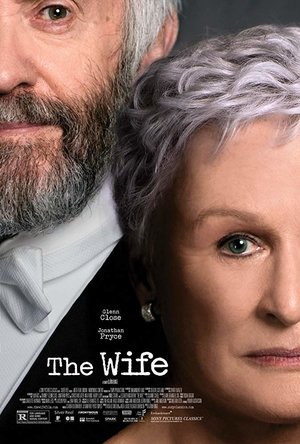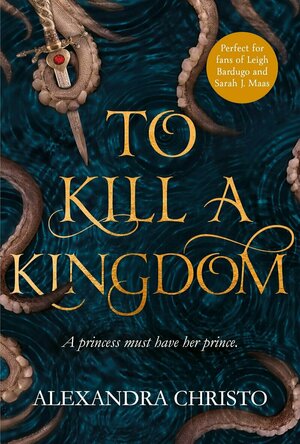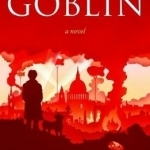Search
Search results

Crorepati India Quiz
Education and Games
App
Crorepati India quiz is Multiple choice question quiz Game which is inspired from famous Indian...

Hands up alias charades and heads up activity game for fun friends company Free
Games and Entertainment
App
Hands up – Charades, Activity and Alias in one app! Exciting game for friends will make your party...
Bob Mann (459 KP) rated The Wife (2017) in Movies
Sep 28, 2021 (Updated Sep 28, 2021)
Glenn Close … #robbed.
I missed “The Wife” when it came out in September, but finally caught it a few weeks ago. (Been a busy time at work so have a bit of a backlog of reviews!).
The Plot.
Joan Castleman (Glenn Close) is the doting wife of internationally renowned writer Joe Castleman (Jonathan Pryce). As we start the film, Joe has just received a call from Stockholm. No, it’s not an “amusing story about a goat” (for any MM2 fans out there). It’s notification that he is to receive the Nobel prize for literature. As Joan listens to the news on the extension, there is something in her eyes that betrays mixed emotions.
They travel to Sweden (on Concorde, obviously) with their son Max (Max Irons) – a writer at the start of his career. Max and Joe have a strained relationship.
Also in Stockholm is Nathanial Bone (Christian Slater) – the bane of Joe’s life, since he seems insistent on writing the biography of the great man. As Nathanial picks through the history of the couple, things start to unravel in unexpected ways.
What a performance!
The heart of this film, and the main reason for watching what is really a bit of a pot-boiler, is the performance by Glenn Close. It’s a remarkable demonstration of the acting craft and 110% Oscar worthy.
Don’t get me wrong…. as I watched the Oscars live in the wee-hours of Monday morning I let out a WHOOP of joy when our own national treasure Olivia Colman picked up the award. But I have to say that I think Glenn Close was rather robbed. Close can act brilliantly without saying a single word. In fact most of her best scenes are reaction shots to what she is listening to.
In comparison I found Jonathan Pryce to be a soupçon over-the-top as the feted writer, and I didn’t find the portrayal of Bone by Slater to be terribly convincing. So it’s a very mixed acting bag in my view.
Utterly gorgeous in a way that only Swedish women can be is Karin Franz Körlof as the personal photographer Linnea. She can also act!
A perfectly pleasant movie
Directed by Swedish director Björn Runge and with a screenplay by Jane Anderson, it’s a perfectly pleasant way to spend a couple of hours. The story is intriguing enough to keep your interest, although it plays its hand so early that the simmering suspense element ebbs out of the film. A final “Sixth Sense” style of reveal might have been much more effective.
But this is above all a film to relish the performance of Close: the facial acting during the speech at the awards ceremony is something that should be studied at acting schools for years to come.
The Plot.
Joan Castleman (Glenn Close) is the doting wife of internationally renowned writer Joe Castleman (Jonathan Pryce). As we start the film, Joe has just received a call from Stockholm. No, it’s not an “amusing story about a goat” (for any MM2 fans out there). It’s notification that he is to receive the Nobel prize for literature. As Joan listens to the news on the extension, there is something in her eyes that betrays mixed emotions.
They travel to Sweden (on Concorde, obviously) with their son Max (Max Irons) – a writer at the start of his career. Max and Joe have a strained relationship.
Also in Stockholm is Nathanial Bone (Christian Slater) – the bane of Joe’s life, since he seems insistent on writing the biography of the great man. As Nathanial picks through the history of the couple, things start to unravel in unexpected ways.
What a performance!
The heart of this film, and the main reason for watching what is really a bit of a pot-boiler, is the performance by Glenn Close. It’s a remarkable demonstration of the acting craft and 110% Oscar worthy.
Don’t get me wrong…. as I watched the Oscars live in the wee-hours of Monday morning I let out a WHOOP of joy when our own national treasure Olivia Colman picked up the award. But I have to say that I think Glenn Close was rather robbed. Close can act brilliantly without saying a single word. In fact most of her best scenes are reaction shots to what she is listening to.
In comparison I found Jonathan Pryce to be a soupçon over-the-top as the feted writer, and I didn’t find the portrayal of Bone by Slater to be terribly convincing. So it’s a very mixed acting bag in my view.
Utterly gorgeous in a way that only Swedish women can be is Karin Franz Körlof as the personal photographer Linnea. She can also act!
A perfectly pleasant movie
Directed by Swedish director Björn Runge and with a screenplay by Jane Anderson, it’s a perfectly pleasant way to spend a couple of hours. The story is intriguing enough to keep your interest, although it plays its hand so early that the simmering suspense element ebbs out of the film. A final “Sixth Sense” style of reveal might have been much more effective.
But this is above all a film to relish the performance of Close: the facial acting during the speech at the awards ceremony is something that should be studied at acting schools for years to come.

Breaking Open the Head: A Psychedelic Journey into the Heart of Contemporary Shamanism
Book
A dazzling work of personal travelogue and cultural criticism that ranges from the primitive to the...
Spirituality Ethnography
Hazel (1853 KP) rated To Kill a Kingdom in Books
Apr 9, 2018
A princess must have her prince but perhaps not in the usual happy-ever-after fairytale way. With sirens, princes, pirates, mermaids and magic, To Kill a Kingdom by Alexandra Christo is a dark fantasy novel perfect for those who grew up with Peter Pan and The Little Mermaid. But, as with most traditional fairy tales, this book is riddled with trickery and lies, making it a heart-stopping adventure.
Lira is a siren princess who is nearing her eighteenth birthday. In order to celebrate the life of their goddess Keto and get revenge for her death at the hands of the humans, each siren must kill and remove the heart of a human victim. Lira has always targeted princes and aims to steal the heart of Prince Elian of Midasan, however, her mother, the sea queen, has different ideas.
As punishment for disobeying her orders, the evil queen temporarily turns Lira into a human, stripping her of her siren power. In order to return, she must kill Prince Elian and return to the sea with his heart. However, things get complicated when Prince Elian saves Lira from drowning and takes her aboard his ship.
Elian is a prince-cum-pirate who has no wish to be the heir of the golden kingdom of Midasan. He spends his days as the captain of his ship, hunting and killing sirens. Not realising Lira is the siren he most wishes to destroy, he gradually gets used to her presence and believes she will be useful to him on his quest to find a crystal that will destroy the sea queen forever. Lira agrees to help, however, she has an ulterior motive – perhaps she can help Elian find the crystal then kill him and destroy her mother …
It takes a while for this dark, romantic young adult novel to get going; there is a lot of introduction to characters and the way their fantasy world operates. With different customs to get familiar with, particularly in the case of the sirens, it is a little monotonous for the first few chapters. However, once Lira and Elian meet, events become far more interesting.
The banter and insults hurled between Elian, Lira and the rest of the crew is a humorous addition to the storyline and makes the prince and princesses growing relationship all the more exciting. With the sea queen lurking in the shadows, the story builds up to a fateful conclusion, however, maybe Lira can steal the prince’s heart a different way.
Once the story is well underway it becomes an engrossing piece of literature that is difficult to put down. With romance, danger and a cataclysmic ending, it has everything that a young adult fantasy fan wishes for. To Kill a Kingdom is Christo’s debut and it is exciting to find out what she will write next.
Lira is a siren princess who is nearing her eighteenth birthday. In order to celebrate the life of their goddess Keto and get revenge for her death at the hands of the humans, each siren must kill and remove the heart of a human victim. Lira has always targeted princes and aims to steal the heart of Prince Elian of Midasan, however, her mother, the sea queen, has different ideas.
As punishment for disobeying her orders, the evil queen temporarily turns Lira into a human, stripping her of her siren power. In order to return, she must kill Prince Elian and return to the sea with his heart. However, things get complicated when Prince Elian saves Lira from drowning and takes her aboard his ship.
Elian is a prince-cum-pirate who has no wish to be the heir of the golden kingdom of Midasan. He spends his days as the captain of his ship, hunting and killing sirens. Not realising Lira is the siren he most wishes to destroy, he gradually gets used to her presence and believes she will be useful to him on his quest to find a crystal that will destroy the sea queen forever. Lira agrees to help, however, she has an ulterior motive – perhaps she can help Elian find the crystal then kill him and destroy her mother …
It takes a while for this dark, romantic young adult novel to get going; there is a lot of introduction to characters and the way their fantasy world operates. With different customs to get familiar with, particularly in the case of the sirens, it is a little monotonous for the first few chapters. However, once Lira and Elian meet, events become far more interesting.
The banter and insults hurled between Elian, Lira and the rest of the crew is a humorous addition to the storyline and makes the prince and princesses growing relationship all the more exciting. With the sea queen lurking in the shadows, the story builds up to a fateful conclusion, however, maybe Lira can steal the prince’s heart a different way.
Once the story is well underway it becomes an engrossing piece of literature that is difficult to put down. With romance, danger and a cataclysmic ending, it has everything that a young adult fantasy fan wishes for. To Kill a Kingdom is Christo’s debut and it is exciting to find out what she will write next.
Janeeny (200 KP) rated Things Fall Apart in Books
Jun 10, 2019
I was very confused by February’s ‘Penguin Reading Challenge’, as I don’t think I got one. Their February newsletter did recommend ‘Pride and Prejudice’ as a valentine read so potentially that may have been my classic recommendation for the month, however I’ve already read that one so I decided this month to go for January’s second recommendation of Chinua Achebe’s ‘Things fall apart’.
I don’t really know how to summarise this book without giving a lot away so I’m going to rely on Amazon –
Okonowo is the greatest warrior alive. His fame has spread like a bushfire in West Africa and he is one of the most powerful men of his clan.
But he also has a fiery temper. Determined not to be like his father, he refuses to show weakness to anyone – even if the only way he can master his feelings is with his fists. When outsiders threaten the traditions of his clan, Okonowo takes violent action. Will the great man’s dangerous pride eventually destroy him?
Again a Classic that did actually engross me. At the risk of sounding like a complete heel I was expecting to be lectured to by this book. Usually with Historical literature books of such high acclaim we encounter a lot of hidden and profound messages about our place in the world and how we treat others and the story can feel a bit dry. Also, with the other Historical fiction based in other countries I’ve read, I’ve appreciated the story, but they have essentially been based around problems exclusive to that era and culture, so it’s not really something I can relate to.
So oddly enough this little book set within a Nigerian tribe in the 1890s was actually quite relatable. Ok so maybe not many people can relate to a situation where you and a group of other men lead your foster son to a dark forest and kill him, but we can relate to making hard choices in life and letting down the ones we love.
You know as soon as you meet Okonowo that things are not going to go well for him, he is a prideful man quick to anger. He mistreats his wives and has high expectations of his children, and his intentions whilst well-meaning for his family are also misguided. Okonowo lives in a very superstitious village, and you can see that, after Okonowo does something that a close friend warns him against, that things will start to go bad from there. Things do not end well for Okonowo, as he doesn’t seem to learn or heed the warnings around him, but in the end you do start to sympathise with him a bit.
I think the best way to summarise the events in ‘Things fall apart’ is that whilst Okonowo’s problems are steered by his tribe’s beliefs and superstitions they are in essence problems that are relatable around the world.
I don’t really know how to summarise this book without giving a lot away so I’m going to rely on Amazon –
Okonowo is the greatest warrior alive. His fame has spread like a bushfire in West Africa and he is one of the most powerful men of his clan.
But he also has a fiery temper. Determined not to be like his father, he refuses to show weakness to anyone – even if the only way he can master his feelings is with his fists. When outsiders threaten the traditions of his clan, Okonowo takes violent action. Will the great man’s dangerous pride eventually destroy him?
Again a Classic that did actually engross me. At the risk of sounding like a complete heel I was expecting to be lectured to by this book. Usually with Historical literature books of such high acclaim we encounter a lot of hidden and profound messages about our place in the world and how we treat others and the story can feel a bit dry. Also, with the other Historical fiction based in other countries I’ve read, I’ve appreciated the story, but they have essentially been based around problems exclusive to that era and culture, so it’s not really something I can relate to.
So oddly enough this little book set within a Nigerian tribe in the 1890s was actually quite relatable. Ok so maybe not many people can relate to a situation where you and a group of other men lead your foster son to a dark forest and kill him, but we can relate to making hard choices in life and letting down the ones we love.
You know as soon as you meet Okonowo that things are not going to go well for him, he is a prideful man quick to anger. He mistreats his wives and has high expectations of his children, and his intentions whilst well-meaning for his family are also misguided. Okonowo lives in a very superstitious village, and you can see that, after Okonowo does something that a close friend warns him against, that things will start to go bad from there. Things do not end well for Okonowo, as he doesn’t seem to learn or heed the warnings around him, but in the end you do start to sympathise with him a bit.
I think the best way to summarise the events in ‘Things fall apart’ is that whilst Okonowo’s problems are steered by his tribe’s beliefs and superstitions they are in essence problems that are relatable around the world.
Hazel (1853 KP) rated To Kill a Kingdom in Books
Dec 7, 2018
<i>This ebook was provided by the publisher via NetGalley in exchange for an honest review </i>
A princess must have her prince but perhaps not in the usual happy-ever-after fairytale way. With sirens, princes, pirates, mermaids and magic, <i>To Kill a Kingdom</i> by Alexandra Christo is a dark fantasy novel perfect for those who grew up with <i>Peter Pan</i> and The Little Mermaid. But, as with most traditional fairy tales, this book is riddled with trickery and lies, making it a heart-stopping adventure.
Lira is a siren princess who is nearing her eighteenth birthday. In order to celebrate the life of their goddess Keto and get revenge for her death at the hands of the humans, each siren must kill and remove the heart of a human victim. Lira has always targeted princes and aims to steal the heart of Prince Elian of Midasan, however, her mother, the sea queen, has different ideas.
As punishment for disobeying her orders, the evil queen temporarily turns Lira into a human, stripping her of her siren power. In order to return, she must kill Prince Elian and return to the sea with his heart. However, things get complicated when Prince Elian saves Lira from drowning and takes her aboard his ship.
Elian is a prince-cum-pirate who has no wish to be the heir of the golden kingdom of Midasan. He spends his days as the captain of his ship, hunting and killing sirens. Not realising Lira is the siren he most wishes to destroy, he gradually gets used to her presence and believes she will be useful to him on his quest to find a crystal that will destroy the sea queen forever. Lira agrees to help, however, she has an ulterior motive – perhaps she can help Elian find the crystal then kill him and destroy her mother …
It takes a while for this dark, romantic young adult novel to get going; there is a lot of introduction to characters and the way their fantasy world operates. With different customs to get familiar with, particularly in the case of the sirens, it is a little monotonous for the first few chapters. However, once Lira and Elian meet, events become far more interesting.
The banter and insults hurled between Elian, Lira and the rest of the crew is a humorous addition to the storyline and makes the prince and princesses growing relationship all the more exciting. With the sea queen lurking in the shadows, the story builds up to a fateful conclusion, however, maybe Lira can steal the prince’s heart a different way.
Once the story is well underway it becomes an engrossing piece of literature that is difficult to put down. With romance, danger and a cataclysmic ending, it has everything that a young adult fantasy fan wishes for. To Kill a Kingdom is Christo’s debut and it is exciting to find out what she will write next.
A princess must have her prince but perhaps not in the usual happy-ever-after fairytale way. With sirens, princes, pirates, mermaids and magic, <i>To Kill a Kingdom</i> by Alexandra Christo is a dark fantasy novel perfect for those who grew up with <i>Peter Pan</i> and The Little Mermaid. But, as with most traditional fairy tales, this book is riddled with trickery and lies, making it a heart-stopping adventure.
Lira is a siren princess who is nearing her eighteenth birthday. In order to celebrate the life of their goddess Keto and get revenge for her death at the hands of the humans, each siren must kill and remove the heart of a human victim. Lira has always targeted princes and aims to steal the heart of Prince Elian of Midasan, however, her mother, the sea queen, has different ideas.
As punishment for disobeying her orders, the evil queen temporarily turns Lira into a human, stripping her of her siren power. In order to return, she must kill Prince Elian and return to the sea with his heart. However, things get complicated when Prince Elian saves Lira from drowning and takes her aboard his ship.
Elian is a prince-cum-pirate who has no wish to be the heir of the golden kingdom of Midasan. He spends his days as the captain of his ship, hunting and killing sirens. Not realising Lira is the siren he most wishes to destroy, he gradually gets used to her presence and believes she will be useful to him on his quest to find a crystal that will destroy the sea queen forever. Lira agrees to help, however, she has an ulterior motive – perhaps she can help Elian find the crystal then kill him and destroy her mother …
It takes a while for this dark, romantic young adult novel to get going; there is a lot of introduction to characters and the way their fantasy world operates. With different customs to get familiar with, particularly in the case of the sirens, it is a little monotonous for the first few chapters. However, once Lira and Elian meet, events become far more interesting.
The banter and insults hurled between Elian, Lira and the rest of the crew is a humorous addition to the storyline and makes the prince and princesses growing relationship all the more exciting. With the sea queen lurking in the shadows, the story builds up to a fateful conclusion, however, maybe Lira can steal the prince’s heart a different way.
Once the story is well underway it becomes an engrossing piece of literature that is difficult to put down. With romance, danger and a cataclysmic ending, it has everything that a young adult fantasy fan wishes for. To Kill a Kingdom is Christo’s debut and it is exciting to find out what she will write next.
Cassie Osbourne (6 KP) rated The Secret Countess in Books
Nov 9, 2018
Countess Anna Grazinsky had it all: riches, jewels, palaces, English nannies, everything. And then the Russian revolution came along. Now in 1919, Anna and her family are penniless in London so she decides to get a job as a housemaid to the newly engaged Earl of Mersham.
This is the third Eva Ibbotson book that IÕve read this year and, whilst I have enjoyed them all, I canÕt help noticing that the characters are basically all the same. Heroine who seems completely perfect and has no flaws, love interest who is complex and often broody (also the most well rounded character in the book) and the obvious villain who spends the whole book being obviously villainous. All that being said, I do really like these characters. I could relate to Anna despite her perfectness, I understood RupertÕs problems regardless of how blind he was being at times and I enjoyed just how horrible and ruthless Muriel could be. I also loved the side characters. Ollie was adorable, Lavinia was hilarious and Baskerville was strangely well fleshed out for a dog (seriously, Ibbotson gives him a whole personality where most authors wouldnÕt have bothered). Yes most of the characters were simple without huge character arcs but I liked them all the same.
IbbotsonÕs writing style is easy to slip into and nice to read, if a little over fond of commas. However it is the atmosphere that really lets this book down Ñ there isnÕt really too much of it. There are a moments where a small amount is created, and those passages are certainly the most memorable, but there are unfortunately few and far between. ThatÕs not to say that the general feeling is bad or uncomfortable to read when it shouldnÕt be, but I would liked to have seen more of...well, something.
In a similar vein to what I said about the characters earlier, most of IbbotsonÕs young adult literature seems to follow a similar structure. Girl leaves family to do something or be someone that they often donÕt approve of, meets a misunderstood man, they fall in love but he is unavailable (or she thinks he is) and she leaves him without a word but donÕt worry, they are reunited and they all live happily ever after. However, if it ainÕt broke, donÕt fix it. While the main skeleton structure is used for most of her work, each of IbbotsonÕs books have a difference and a charm that stays with you and is memorable. There are plenty of little surprises and some twists and turns.
While this review may seem mixed and sound negative, I did really enjoy this book. I have kept it on my shelves with my other Eva Ibbotson novels for a reason and IÕm sure I will return to it.
Character: 7.5
Atmosphere: 5.5
Writing Style: 9
Plot: 8
Intrigue: 8
Logic: 8
Enjoyment: 8
This is the third Eva Ibbotson book that IÕve read this year and, whilst I have enjoyed them all, I canÕt help noticing that the characters are basically all the same. Heroine who seems completely perfect and has no flaws, love interest who is complex and often broody (also the most well rounded character in the book) and the obvious villain who spends the whole book being obviously villainous. All that being said, I do really like these characters. I could relate to Anna despite her perfectness, I understood RupertÕs problems regardless of how blind he was being at times and I enjoyed just how horrible and ruthless Muriel could be. I also loved the side characters. Ollie was adorable, Lavinia was hilarious and Baskerville was strangely well fleshed out for a dog (seriously, Ibbotson gives him a whole personality where most authors wouldnÕt have bothered). Yes most of the characters were simple without huge character arcs but I liked them all the same.
IbbotsonÕs writing style is easy to slip into and nice to read, if a little over fond of commas. However it is the atmosphere that really lets this book down Ñ there isnÕt really too much of it. There are a moments where a small amount is created, and those passages are certainly the most memorable, but there are unfortunately few and far between. ThatÕs not to say that the general feeling is bad or uncomfortable to read when it shouldnÕt be, but I would liked to have seen more of...well, something.
In a similar vein to what I said about the characters earlier, most of IbbotsonÕs young adult literature seems to follow a similar structure. Girl leaves family to do something or be someone that they often donÕt approve of, meets a misunderstood man, they fall in love but he is unavailable (or she thinks he is) and she leaves him without a word but donÕt worry, they are reunited and they all live happily ever after. However, if it ainÕt broke, donÕt fix it. While the main skeleton structure is used for most of her work, each of IbbotsonÕs books have a difference and a charm that stays with you and is memorable. There are plenty of little surprises and some twists and turns.
While this review may seem mixed and sound negative, I did really enjoy this book. I have kept it on my shelves with my other Eva Ibbotson novels for a reason and IÕm sure I will return to it.
Character: 7.5
Atmosphere: 5.5
Writing Style: 9
Plot: 8
Intrigue: 8
Logic: 8
Enjoyment: 8
Hazel (1853 KP) rated The Road to Reckoning in Books
Dec 17, 2018
My rating: 2.5.
<i>I received this book for free through Goodreads First Reads.</i>
<i>The Road to Reckoning</i> is British author Robert Lautner’s debut western-style novel. Set in the 1830s it follows a young boy’s long journey home through the open lands of America.
Tom Walker, now an elderly (or so it suggests) man, is giving an account of what happened to him during the year 1837 when “my life began” at the age of twelve. Tom’s father was a salesman who often let his son accompany him on his trips to sell spectacles. So when he receives the opportunity to pitch a new type of pistol known as a revolving gun for Samuel Colt at the <i>Patent Arms Manufacturing Company</i>, he brings Tom with him on the road. Originally living in New York they set out on a journey of many miles over several days demonstrating and taking orders for the pistol. However a dangerous encounter with a man, Thomas, Heywood, and his gang leaves Tom alone and orphaned.
There are two main characters to this story with Tom naturally being one of them. The other is an aging ranger named Henry Stands who Tom insists on following as he is travelling in the direction of New York and Tom’s home. To begin with Stands is very reluctant to have Tom tailing him on his journey especially as it becomes evident that he would have to provide for the boy. Stands ends up abandoning him but has a change of heart and returns in time to prevent Tom from being sent to St John’s Orphan Asylum.
And so their journey continues with Stands becoming kinder and even fatherly towards Tom, saving his life on more than one occasion; and Tom becoming all the more bolder. However the entire time is the fear and knowledge that Thomas Heywood is searching for Tom with the intention of leaving him in the same situation as his father – dead.
I have not read many western-style novels, and those that I have read I did not enjoy much, but <i>The Road to Reckoning</i> was better than I was anticipating. The main character being only twelve years old made the storyline more emotional especially when taking into account the death of his father and his growing attachment to Henry Stands.
The novel was well written and, although fictional, had an essence of factual truth about it. Samuel Colt was a real life American inventor who founded the <i>Colt’s Patent Fire-Arms Manufacturing Company</i>, which produced the revolver for commercial use. The blurb claims that fans of <i>Cold Mountain</i> and <i>True Grit</i>, neither of which I have read, would enjoy this story. Obviously I cannot give my opinion on that but I would say that to get the most out of reading <i>The Road to Reckoning</i> having an interest in western-style literature would be beneficial.
<i>I received this book for free through Goodreads First Reads.</i>
<i>The Road to Reckoning</i> is British author Robert Lautner’s debut western-style novel. Set in the 1830s it follows a young boy’s long journey home through the open lands of America.
Tom Walker, now an elderly (or so it suggests) man, is giving an account of what happened to him during the year 1837 when “my life began” at the age of twelve. Tom’s father was a salesman who often let his son accompany him on his trips to sell spectacles. So when he receives the opportunity to pitch a new type of pistol known as a revolving gun for Samuel Colt at the <i>Patent Arms Manufacturing Company</i>, he brings Tom with him on the road. Originally living in New York they set out on a journey of many miles over several days demonstrating and taking orders for the pistol. However a dangerous encounter with a man, Thomas, Heywood, and his gang leaves Tom alone and orphaned.
There are two main characters to this story with Tom naturally being one of them. The other is an aging ranger named Henry Stands who Tom insists on following as he is travelling in the direction of New York and Tom’s home. To begin with Stands is very reluctant to have Tom tailing him on his journey especially as it becomes evident that he would have to provide for the boy. Stands ends up abandoning him but has a change of heart and returns in time to prevent Tom from being sent to St John’s Orphan Asylum.
And so their journey continues with Stands becoming kinder and even fatherly towards Tom, saving his life on more than one occasion; and Tom becoming all the more bolder. However the entire time is the fear and knowledge that Thomas Heywood is searching for Tom with the intention of leaving him in the same situation as his father – dead.
I have not read many western-style novels, and those that I have read I did not enjoy much, but <i>The Road to Reckoning</i> was better than I was anticipating. The main character being only twelve years old made the storyline more emotional especially when taking into account the death of his father and his growing attachment to Henry Stands.
The novel was well written and, although fictional, had an essence of factual truth about it. Samuel Colt was a real life American inventor who founded the <i>Colt’s Patent Fire-Arms Manufacturing Company</i>, which produced the revolver for commercial use. The blurb claims that fans of <i>Cold Mountain</i> and <i>True Grit</i>, neither of which I have read, would enjoy this story. Obviously I cannot give my opinion on that but I would say that to get the most out of reading <i>The Road to Reckoning</i> having an interest in western-style literature would be beneficial.
Eilidh G Clark (177 KP) rated Goblin in Books
Jul 2, 2019
Brilliant book, well wriiten, original
Winner of the Saltire Society first book of the year award 2017, Goblin, by Ever Dundas is a brilliant and brave first novel. Set in both London during WW2 and in Edinburgh in 2011, the story is told in flashback. For me, the first half of the novel is the best, we meet Goblin as a nine-year-old tomboy with a love for animals and a passion for storytelling - both of which the protagonist collects.
Goblin has a difficult family life; a mother who doesn’t want her, 'Goblin-runt born blue. Nothing can kill you. [...] You're like a cockroach,' (p.5) a father who mends radio’s and barely talks and a brother (David) who spends most of his time in his bedroom. Left to her own devices, the protagonist, her dog Devil, and her two friends Mac and Stevie roam the neighbourhood and hang around in an abandoned worksite. As a collector of stories, Goblin enthusiastically attends the local church with Mac, 'I loved the stories, turning them over in my head, weaving my own.' (p.24) before meeting The Crazy Pigeon Lady who tells her tales of Lizards people from the realm below. The childhood innocence in these chapters, mixed with magic realism, break down the walls of adult reasoning and creates a wonderful suspension of disbelief.
But without giving away the story plot, the suspension of disbelief serves another purpose; to divert the reader (as well as the adult protagonist) from the truth. So, while the adult Goblin searches amongst her tangled past, she takes the reader along for the ride. We meet multiple parents, live life on the road, come alive on the streets and in the circus, explore love, death, desire, and hate – and somewhere in the middle we meet an impressive collection of animals - Goblin has it all. And as far as strong female protagonists go, she’s right up there with Anais Hendricks from Jenni Fagan’s Panopticon, to Janie Ryan in Kerry Hudson’s Tony Hogan Bought Me an Ice Cream Float Before He Stole My Ma, characters who are so real you might just walk by them on the street.
The only teeny tiny criticism about the novel is that the second half spans over a lengthy period of time and it felt a little rushed. However, there is so much to say about this novel, so many angles to discuss, from Queer Theory to Religion, from Myth to Realism, and as a graduate of English Literature I could have a field day studying this book but for now, as a lover of good books, I’ll give it a big thumbs up and a huge recommendation, it’ll be finding a space on my ‘keep’ book shelve.
Goblin, Ever Dundas (2017) published by Saraband
Goblin has a difficult family life; a mother who doesn’t want her, 'Goblin-runt born blue. Nothing can kill you. [...] You're like a cockroach,' (p.5) a father who mends radio’s and barely talks and a brother (David) who spends most of his time in his bedroom. Left to her own devices, the protagonist, her dog Devil, and her two friends Mac and Stevie roam the neighbourhood and hang around in an abandoned worksite. As a collector of stories, Goblin enthusiastically attends the local church with Mac, 'I loved the stories, turning them over in my head, weaving my own.' (p.24) before meeting The Crazy Pigeon Lady who tells her tales of Lizards people from the realm below. The childhood innocence in these chapters, mixed with magic realism, break down the walls of adult reasoning and creates a wonderful suspension of disbelief.
But without giving away the story plot, the suspension of disbelief serves another purpose; to divert the reader (as well as the adult protagonist) from the truth. So, while the adult Goblin searches amongst her tangled past, she takes the reader along for the ride. We meet multiple parents, live life on the road, come alive on the streets and in the circus, explore love, death, desire, and hate – and somewhere in the middle we meet an impressive collection of animals - Goblin has it all. And as far as strong female protagonists go, she’s right up there with Anais Hendricks from Jenni Fagan’s Panopticon, to Janie Ryan in Kerry Hudson’s Tony Hogan Bought Me an Ice Cream Float Before He Stole My Ma, characters who are so real you might just walk by them on the street.
The only teeny tiny criticism about the novel is that the second half spans over a lengthy period of time and it felt a little rushed. However, there is so much to say about this novel, so many angles to discuss, from Queer Theory to Religion, from Myth to Realism, and as a graduate of English Literature I could have a field day studying this book but for now, as a lover of good books, I’ll give it a big thumbs up and a huge recommendation, it’ll be finding a space on my ‘keep’ book shelve.
Goblin, Ever Dundas (2017) published by Saraband




